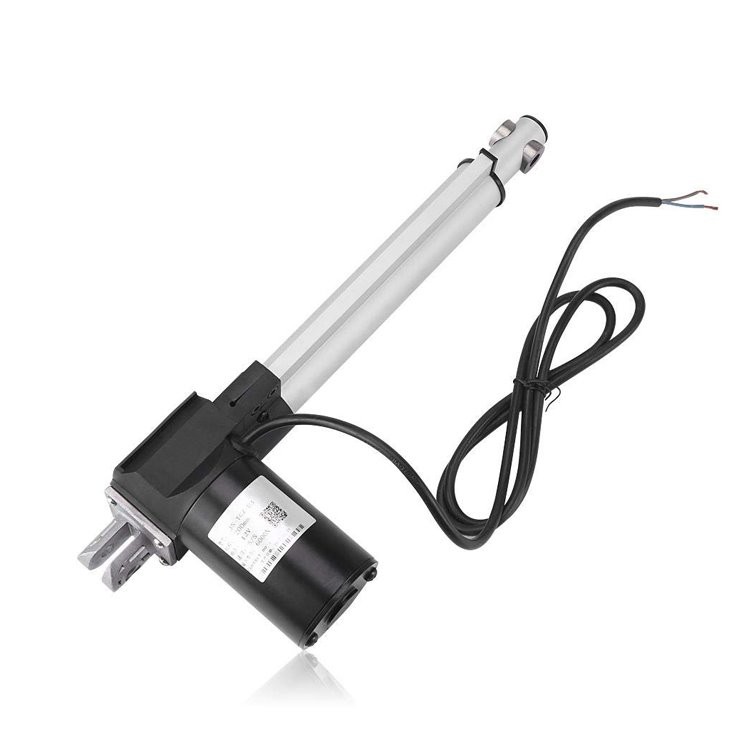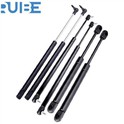Hey there! As a supplier of electric linear actuators, I've had my fair share of experiences with these nifty devices. Today, I'm gonna share with you how to control an electric linear actuator.
First off, let's quickly understand what an electric linear actuator is. It's a device that converts electrical energy into linear motion. You can find these things in all sorts of applications, from Linear Actuator for Electric Sofa to industrial machinery. They're super useful because they can provide precise and controlled movement.
Understanding the Basics of Control
Before we dive into the nitty - gritty of control methods, it's important to know some basic components of an electric linear actuator system. Usually, it consists of an actuator itself, a power supply, and a control mechanism.
The power supply is what gives the actuator the energy it needs to move. Most actuators can work with different types of power sources, like DC or AC. You gotta make sure you're using the right power supply for your specific actuator. Using the wrong one can damage the actuator or make it work inefficiently.
The control mechanism is what tells the actuator when to move, how far to move, and at what speed. There are several ways to control an electric linear actuator, and I'll go through each of them.
Manual Control
One of the simplest ways to control an electric linear actuator is through manual control. This can be done using a switch. You've probably seen this in some home applications, like adjusting the position of a Mini Linear Actuator in a small piece of furniture.
A manual switch can be a simple on - off switch or a more complex multi - position switch. With an on - off switch, you can only start and stop the actuator's movement. But with a multi - position switch, you can control the actuator to move to different pre - set positions.
For example, if you have an electric sofa with an actuator, a multi - position switch can let you adjust the sofa to different reclining angles. Manual control is great for applications where you don't need a lot of precision or where you want the user to have direct control.
Remote Control
Remote control is another popular method, especially in consumer products. It gives you the convenience of controlling the actuator from a distance. There are different types of remote controls available.
Some use infrared (IR) signals, which are similar to the ones used in your TV remote. These are relatively inexpensive and easy to set up. However, they have a limited range and need a clear line of sight between the remote and the actuator's receiver.
Other remote controls use radio frequency (RF) signals. RF remotes have a longer range and don't require a clear line of sight. They're more commonly used in industrial applications or in larger consumer products. For instance, a High Speed Linear Actuator in a large machinery might be controlled by an RF remote.
Programmable Control
If you need more precise and complex control, programmable control is the way to go. This involves using a controller, like a microcontroller or a programmable logic controller (PLC).


A microcontroller is a small computer on a single integrated circuit. You can program it to control the actuator based on specific conditions or algorithms. For example, you can program a microcontroller to make the actuator move a certain distance every few minutes.
A PLC is a more industrial - grade controller. It's designed to handle more complex control tasks in harsh industrial environments. PLCs can be programmed using ladder logic, which is a simple graphical programming language. They're great for controlling multiple actuators at the same time and coordinating their movements.
Sensor - Based Control
Sensors can also be used to control an electric linear actuator. There are different types of sensors that can be integrated with the actuator system.
Position sensors, like potentiometers or encoders, can tell you the exact position of the actuator. This information can be used to control the actuator's movement more precisely. For example, if you want the actuator to stop at a specific position, the position sensor can send a signal to the controller when that position is reached.
Force sensors can measure the force exerted by the actuator. This is useful in applications where you need to control the force applied by the actuator. For instance, in a manufacturing process where you're using an actuator to press something, a force sensor can ensure that the right amount of force is applied.
Considerations for Control
When choosing a control method for your electric linear actuator, there are a few things you need to consider.
Cost is always a factor. Manual control is the cheapest option, while programmable control using a PLC can be quite expensive. You need to balance your budget with the level of control you need.
Precision is another important consideration. If you need very precise control, you might need to invest in a more advanced control system, like a programmable controller or a sensor - based system.
The environment where the actuator will be used also matters. In a dirty or wet environment, you might need a more rugged control system, like a PLC. And in a home environment, a simple remote control or manual switch might be sufficient.
Troubleshooting Control Issues
Even with the best - designed control systems, you might run into some issues.
If the actuator isn't responding to the control signals, first check the power supply. Make sure it's providing the right voltage and current. A loose connection or a blown fuse can also cause this problem.
If the actuator is moving erratically, it could be a problem with the control signal. Check the wiring between the controller and the actuator. Also, make sure the controller is programmed correctly.
If the actuator is moving too slowly or too fast, it could be due to a problem with the power supply or the control settings. Check the voltage and current of the power supply, and adjust the control settings if necessary.
Conclusion
Controlling an electric linear actuator isn't as complicated as it might seem. There are several methods available, from simple manual control to advanced programmable and sensor - based control. By understanding the basics of each method and considering factors like cost, precision, and environment, you can choose the right control system for your application.
If you're in the market for an electric linear actuator or need more information on controlling them, don't hesitate to reach out. We're here to help you find the perfect solution for your needs. Whether you're a homeowner looking for a Linear Actuator for Electric Sofa or an industrial manufacturer in need of a High Speed Linear Actuator, we've got you covered.
References
- "Motion Control Handbook" by Peter Nachtwey
- "Industrial Automation: Theory and Practice" by K. M. Nagaraja






